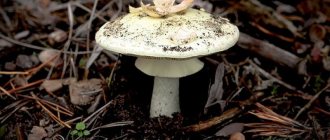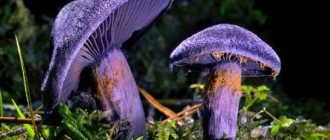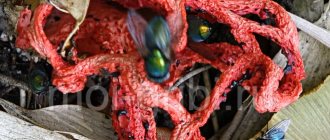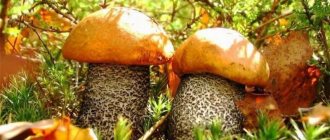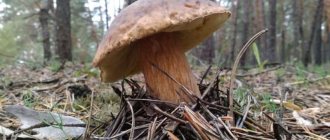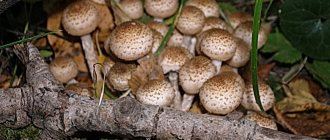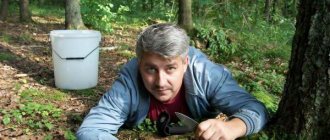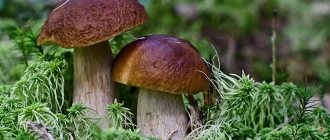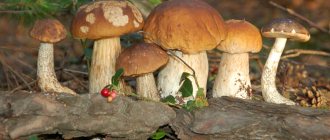Mushrooms
The enormous popularity that this kingdom is gaining is hard to imagine. A kingdom that united strange creatures, separated into a country separate from the animal and plant world. A kingdom without which not a single living organism in nature is able to develop fully and harmoniously. A kingdom that provides its guests with incredible experiences as soon as they touch it. All this is the Kingdom of Mushrooms. However, until a certain time, this Kingdom was in no hurry to reveal its secrets. And only in the 21st century the concept of “mushrooms” lifted its curtain, while remaining ambiguous. Our site will help you make an exciting journey into the amazing world of mushrooms, which holds many secrets and mysteries.
Scientists are still struggling to solve a mystery that is incomprehensible to them. Who or what are they, “mushrooms”? A living organism or a complex plant? Or something new that does not yet have an exact definition? Now the science of mushrooms, mycology, is a separate section in biology. Fungi in mycology are represented by heterotrophic and eukaryotic organisms with poorly differentiated tissues and cell walls. And they must have arguments. This is known for sure. But mushroom science is now beginning to learn much more about these creatures. It tells the story of the partnership between mushrooms and people, between mushrooms and the entire living world.
Mushrooms have been “living” for more than 400,000,000 years, they are diverse and very common throughout the earth. These fruiting bodies are so different that only according to preliminary estimates their number reaches 100,000. Some sources claim that there are more than 250,000 representatives of the fungal kingdom. And if we consider that each biological expedition reveals new species to the scientific community, then their number can reach 1,500,000 representatives! Central Europe alone is ready to provide mushroom pickers with more than 3,000 species of mushrooms. And these are not all the gifts that the mushroom kingdom bestows.
Porcini
Honey mushrooms
Oyster mushroom
Mushrooms can be found almost throughout the year. However, the greatest peak occurs in late summer and autumn. One legend says that it is the child of the forests. This is partly true, since about 70% of all mushrooms grow exclusively in forests on all continents. In addition, mushrooms have a high degree of reproduction. On this site you will find descriptions of many mushrooms, edible and inedible. And although this is only a small part of the displays of all representatives of the mushroom kingdom, however, taking a closer look at these plants (at least some), you will see how complex the relationships are in the plant world, a world that gifts avid mushroom pickers with amazing discoveries. You will also get acquainted with the possibility of growing mushrooms at home. Caring housewives will find delicious recipes for their family that will definitely please their family.
You will also learn that what mushroom pickers usually call “mushrooms” are actually their fruiting bodies. The plants themselves remain invisible - they are hidden underground, in wood and in fallen leaves. They consist of the finest branched and intertwined threads, resembling a cobweb. In the scientific world, this constantly growing structure has its own name - mycelium. Pay attention to it when you go into the forest, carefully opening the soil at the base of the mushroom.
You will also learn that they are similar to plants, but only at first glance, because the difference between them is impressive. Plants necessarily contain chlorophyll, which is involved in photosynthesis. But mushrooms do not have chlorophyll. That is why they cannot be classified as plants. Some species have a strong resemblance to insects that have a chitinous shell, since the composition of the cellular tissue of most fungi includes chitin, which allows the structure of the fungus to be more stable. But these fruiting bodies cannot be called with certainty a living organism, which is similar to insects. However, this does not prevent many from considering them their favorite product.
By the way, it is not known for certain when exactly they began to be eaten. The earliest mention of mushrooms was found in Egyptian tombs in Thebes. Based on excavations, some mushrooms have been eaten for a long time. For example, Caesar's mushroom, especially prized in the Roman Empire. Ordinary people did not dare to eat these mushrooms; they were served only at the ruler’s table. But the Caesars are long gone, and these wonderful plants are still a valuable food product. Why? Perhaps this is explained by the fact that over many centuries the kingdom of mushrooms has shown amazing vitality. Some of them are not affected even by ice and snow, for example the winter honey fungus, which grows from November to April.
Growing honey mushrooms
Growing champignons
Growing oyster mushrooms
However, attempts to “tame” mushrooms rarely ended in success. Today, only a few types of mushrooms are successfully grown at home. This situation is explained by the fact that they can live only in the presence of their partners, forming symbiotic relationships. Moreover, outwardly they do not manifest themselves in any way - everything happens underground, benefiting both. But even “domesticated” mushrooms need certain conditions. Mycelium can grow only in a mixture of humus and horse manure, with a certain humidity in the room. Intensive watering stimulates growth, and they can begin to bear fruit within two weeks. How exactly to grow them, how to achieve large yields and what secrets experienced mushroom growers have - you can find out all this on this site.
The times when scientists did not know exactly how mushrooms grow are gone. The complex connections that weave the roots of trees and mushrooms, penetrating throughout the entire earth, are so complex that even a comparison with the organic Internet cannot explain the entire structure of the underground Kingdom, the rulers of which are these fruiting bodies. However, by following the advice presented on this site, you will be able to tame the underground inhabitants and fully enjoy the fruits of your efforts.
Like
Tweet
Radical mushroom technologiesTen facts from the book “Tangled Life”
Merlin Sheldrake. Confused life. How mushrooms change the world, our consciousness and our future. M.: AST, 2022. Translation from English by Olga Olkhovskaya .
1. We owe everything to mushrooms - and first of all, our existence
One of the main images around which Sheldrake builds his narrative is the “universal web” - wood wide web (a play on words by analogy with the “world wide web”). “The World Wide Web” is much less familiar to us than the “World Wide Web,” but we owe it very, very much. Sheldrake states this at the very beginning of the book, so that the reader understands from the first pages the scale and significance of what will be discussed. According to him, this web at one time gave rise to all known life on land, and even now our future well-being depends entirely on the ability of fungi and plants to maintain mutually beneficial relationships:
“Many of the most significant events on Earth were and are the result of fungal activity. Plants emerged from the water about 500 million years ago thanks to the cooperation of fungi, which served as a root system until the plants acquired roots of their own. Today, more than 90% of plants depend on mycorrhizal fungi—from the Greek μύκης, meaning “mushroom”, and ῥίζα, meaning “root”—that can connect trees into a network.”
2. People have yet to learn how to use mushrooms - for example, use them in construction
Mushrooms are not only demiurges who determine the fate of all life on Earth, but also, to the joy of humanity, a means of solving many pressing human problems that we can actively and wisely use. Sheldrake calls innovations in this area “radical mushroom technologies” and is confident that they have a great future in many areas of our lives.
“Antiviral compounds produced by fungal mycelium help combat bee colony collapse syndrome. The fungi's gluttony could be used to recycle and break down harmful pollutants, such as crude oil left behind after a spill. This process is known as mycoremediation, or mycorestoration. During mycofiltration, contaminated water is passed through mats of mycelium, which trap heavy metals and break down toxins.”
The process of “mycoproduction” also deserves special mention—during it, building materials and textiles are grown from mycelium, which in some cases can replace certain types of plastic and leather. And from the pigments produced by fungi, it is possible to create biomaterials that are resistant to radioactive radiation, since they themselves are not affected by radiation.
3. Worm-eating mushrooms are smart about their diet.
It’s hard to surprise anyone with carnivorous plants, and the fact that mushrooms can be carnivorous is also an “interesting fact.” But there is still a nuance that allows us to mention predatory mushrooms in a separate line.
Let's start with the fact that there are hundreds of species of fungi in the world that catch and eat nematode roundworms. To do this, they use different methods - some grow special sticky networks from which the nematodes cannot escape, some create special catching loops from hyphae, some paralyze the nematodes with a special poison, and some release special ones in pursuit of the worm. spores that germinate in it and immobilize it. Terrible, insidious, inventive, but not exactly sensational. What’s more interesting is that such hunting is often a “conscious” choice of mushrooms, which usually decompose plant matter and switch to a worm diet only in exceptional circumstances - then they begin to produce special organs for hunting, which they do not need at all in ordinary life. Moreover, the specific mechanism for choosing from several dietary options often remains hidden for us.
“If there is enough material around that can turn into rot, they do not pay attention to the worms, even if they are nearby. This practice requires the nematode-eating fungi to be extremely sensitive in order to sense the presence of the worm. <…> One species - Arthrobotrys oligospora - behaves like a “normal” organic-decomposing fungus when there is a lot of organic matter, but, if the need arises, it can set up nematode ambushes on its mycelium. It can also twine around the mycelium of other fungi, starving them, or grow special structures to penetrate the roots of plants from which it feeds. How he chooses an option remains unknown.”
4. Many mushrooms are more sensitive than any of us.
Why do mushrooms grow in one direction and not another? It would seem that this is a simple question that requires a simple answer (for example, this: parts of the mycelium react to external stimuli). But the further we delve into its essence, the sooner we realize that in fact we do not understand anything at all.
“In the 1950s, Nobel laureate biophysicist Max Delbrück became interested in sensory behavior. He chose Phycomyces blakesleeanus as a model organism. <…> Its spore-bearing structures (actually giant vertical hyphae) are sensitive to light about the same as the human eye, and, like it, adapt to its intensity. They are able to detect the faint light coming from just one star, and can be 'blinded' by bright daytime sunlight."
Phycomyces blakesleeanus. Source
Delbrück's studies showed that Phycomyces blakesleeanus
capable of showing real miracles of sensitivity - for example, growing only when the wind speed does not exceed 0.036 km/h, and most importantly - detecting the presence of objects nearby. Objects within a few millimeters of the phycomyces caused the spore-bearing structures of the fungus to deflect without touching them. Decades of experiments and observations have not helped us understand exactly how this “avoidance response” works. It may be tempting to attribute this behavior to the effects of electromagnetic fields, humidity, mechanical factors or temperature, but all these factors were consistently excluded during the experiments. One thing is clear - different types of mushrooms are capable of reacting to different stimuli and particular conditions with a sensitivity that humans have never even dreamed of. For example, young hyphae of the fungus that causes bean rust can “feel” grooves half a micrometer deep (the author notes that this is three times shallower than the grooves between the laser tracks of a CD).
5. The
Massospora turns cicadas into flying salt shakers of death
Parasites and their diabolical ingenuity are a topic that popular science literature authors address with enviable regularity. And they are easy to understand - stories from the lives of creatures parasitizing on each other can make anyone’s blood run cold.
For example, there are mushrooms that, according to the most common hypothesis, are capable of purposefully influencing the behavior of insects with the help of the virus they carry: some varieties paralyze ladybugs, turning them into guardians of wasp eggs, while others increase the aggressiveness of honey bees.
“An even more surprising turn in the history of zombie mushrooms was described by Matt Casson and his team from West Virginia University. He studies the fungus Massospora, which parasitizes cicadas and causes complete decomposition of the rear third of their bodies, allowing the fungus to shoot spores from the rear of the cicadas. Infected males—“flying salt shakers of death,” to quote Casson—become hyperactive and desperately attract females, despite lacking genitals, a testament to how professional the fungus works. However, the central nervous system of the cicadas remains intact."
But the most amazing thing is not even this. An analysis of the “plugs” created by the fungus in the bodies of cicadas showed that it produces a cation (a mild drug of the same class as mephedrone), as well as psilocybin, although, according to the author of the book, Masospore and psilocybin mushrooms are separated by hundreds of millions of years of evolution, they even not related, and there is no other mushroom in the world that would suddenly think of using psilocybin to suppress the will and cloud the mind of half-decayed creatures.
6. A mushroom network can even replace photosynthesis in plants.
So, let's return to the central image of the book - the “universal network”. Having described it in general terms in the introduction, Sheldrake gradually fleshes out information about it, using various examples to analyze the principles of its operation. He considers a particularly characteristic example that gives an idea of the principles of the network's operation - a dazzling white plant that looks like a small smoking pipe made of clay (as the author describes it, in any case). The whirligig survives in the darkest corners of the forest floor because it has given up photosynthesis, but what allowed it to do this? This in itself is amazing: “Imagine that you discovered a species of monkeys that do not eat bananas, but instead collect photosynthetic bacteria in their fur and use them to get energy from sunlight. A cardinal deviation from the norm.”
As you may have already guessed, the whirligig was able to allow itself such free behavior thanks to mushrooms. Its partners, mycorrhizal fungi, take carbon from green plants and then transfer it to the whirligigs through a common mycorrhizal network located underground. This was established for certain thanks to the botanist Erik Björkman, who introduced radioactive carbon isotopes into the trees and showed that radiation accumulated in the nearby whirligigs.
“Since the 1980s, it has become clear that whirligigs are not anomalies at all. Most plants are free in their relationships and can have many fungal partners. Mycorrhizal fungi are also quite free about their relationship with plants. Individual mushroom networks can combine with each other. What is the result? Huge, complex, interconnected systems of mycorrhizal networks. “The fact that it’s all connected underground, no matter where we go, is mind-blowing,” enthused Toby Kearse. — It [the network] is huge. I can’t believe that not everyone is doing it.”
7. Optional fact: While working on the book, the author buried himself in a pile of rotting sawdust.
As already mentioned, the book “Entangled Life” is a rather unique piece of science fiction, in which scientific facts are mixed with the author’s thoughts and various sketches from his personal experience - he is, say, making homemade wine, or he is participating in a controlled experiment related to taking LSD. So, in this sense, it is not surprising that from a book on mushrooms, we can learn not only about mushrooms, but also about a lot of other things that have nothing to do with mushrooms. For example, one of the chapters begins literally like this:
“I lay naked in a pile of decaying wood chips and was generously covered with it up to my neck. It was very hot, and the steam smelled of cedar and the damp smell of old books. I leaned back, sweating under the damp weight, and closed my eyes.”
Sheldrake explains that this is how he describes a visit to a fermentation bath - perhaps the only one outside Japan. The principle of its operation is as follows: raw wood shavings rot for several weeks, and then rot in a large wooden bath, where the visitor plunges. The energy from decomposition provides the proper level of heat, and the general atmosphere and surroundings give thoughts a certain tone and direction. In Sheldrake's case, lying in a putrid bath prompted him to contemplate a hypothetical partnership with mushrooms:
“Are there ways for us to partner with fungi to help us adapt to the current situation where most life on Earth is in danger of being destroyed by human activity? These thoughts may seem like the ravings of a creature neck-deep in decaying wood chips, but a growing number of radical mycologists are of exactly the same opinion. Many types of symbiosis were formed precisely during periods of crisis.”
8. Oyster mushrooms devour diapers almost completely
Here it should be noted that “radical mycology” is not a whim that came into the head of an author littered with wood chips, but a completely developed subcultural trend of thought and activity. Amateur mycologists, obsessed with the idea of rebuilding the world, exchange experiences, participate in congresses and develop various innovative projects. Many of them are directly related to the environment - fortunately, mushrooms can be very useful to humanity in recycling waste. Well, for example:
“In Mexico City, used diapers account for 5 to 15% of all solid waste by weight. Scientists have discovered that the omnivorous mycelium of the oyster mushroom (Pleurotus ostreatus), a fungus that causes white rot in wood, grows well on used diapers. Over the course of two months, the diapers presented to the oyster mushrooms lost 85% of their original weight after the plastic coating was removed. This result can be compared to the 5% weight loss resulting from processing without the use of the mushroom.”
What is the role of mycological enthusiasts in this case? Mushrooms, of course, are omnivores, but they won’t eat anything unless they’re forced – why would they? Accordingly, it is necessary to logically lead them to the need to recycle this or that type of waste. For example, activists managed to teach oyster mushroom mycelium to process cigarette butts along with the toxic substances they contained - gradually all other food sources were excluded from the oyster mushroom’s diet, and in the end it simply had no choice:
“Slow-motion filming showed the mycelium infiltrating a jam jar filled with crumpled, tar-stained cigarette butts, steadily seeping upward. And soon a strong oyster mushroom, first rolled up in a knot and then straightened out, appears from the jar.”
9. African termites cultivate mushroom gardens to process wood.
However, not only people enter into mutually beneficial alliances with mushrooms, cultivating them for their own benefit or material gain. One of the most striking examples of such relationships is provided by African macrothermes termites (Shelderik wonders whether they could be considered the ancient harbingers of radical mycology). They spend most of their life searching for and collecting wood, which, however, they cannot eat on their own. Here they resort to the help of mushrooms:
“Termites grow a wood-destroying fungus called Termitomyces, which digests the wood for them. Termites chew the wood into a slurry and then regurgitate it into a mushroom garden called a mushroom honeycomb to distinguish it from a bee's honeycomb. The fungus uses radical chemistry to permanently decompose the wood. Termites eat the compost left behind. To house the fungus, macrothermes build tall mounds - termite mounds, sometimes up to nine meters in height, some of which are more than 2000 years old.”
10. Even after reading this, you still can hardly imagine how strange the relationship between people and mushrooms can be.
To finally finish off the reader, Sheldrake cites an example described in the diary by Charles Darwin’s granddaughter Gwen Reivrat. Gwen's story concerned her Aunt Etty—Darwin's daughter—who had a pure, unadulterated, and intense aversion to a mushroom known as the common fungus. We know it under the name "stinking morel", and its Latin name is the immodest phallus ( Phallus impudicus
).
The mushroom is really not the most pleasant - it stinks, produces mucus, and in general does not look very good. However, Aunt Etty's contempt for him took on truly pathological forms. She devoted her days to an uncompromising fight against these mushrooms, which Gwen Reivrat describes as follows:
“Armed with a basket and a sharpened stick, equipped with a special cloak and gloves for picking mushrooms, she walked through the forest, sniffing, stopping briefly here and there. When she caught the scent of her future prey, her nostrils twitched, then she made a deadly leap, falling on her victim, and, hooking him on a stick, threw the stinking body into the basket. At the end of the day of hunting, the catch was delivered home and burned in the deepest secrecy in the living room fireplace behind locked doors - so as not to embarrass the maidservants.”
Sheldrake emphasizes the bitter (for Aunt) irony of this situation - it is obvious that all this fussing with the mushrooms and dragging them from place to place contributed to the spread of spores, so that all of Aunt Etty's struggle in the long run turned out to be a triumph for the mushroom. As, however, has happened more than once in the entire history of life on Earth.
